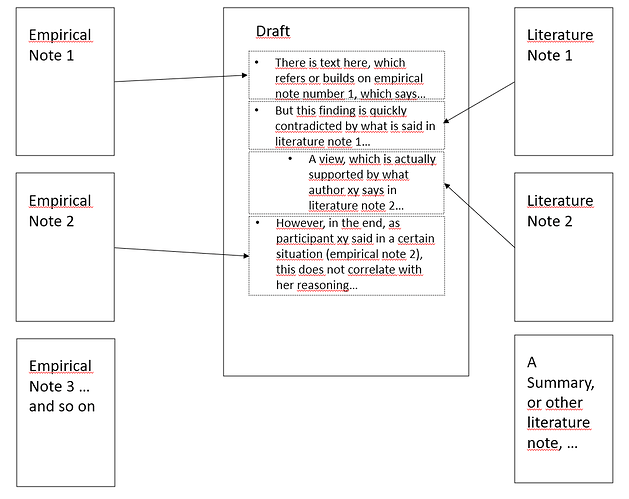THIS! Thank you so much for posting this; especially the Roam extension looks exactly like what I have been dearly missing this past few weeks.
To explain: During the last few weeks, I put RemNote to the test and tried to write a draft for a paper from my various notes. The workflow goes and - with windowed panes - looks roughly like this:
empirical data → draft ← literature note
Various documents hold empirical data and various documents hold my literature notes. Both are ‘assembled’ in the draft.
Although far from perfect, the introduction of windowed panes has been a massive improvement for me. What I’ve missed so far, though, is seeing (visually) the connections between individual notes and the draft. What I’m envisaging is something like this, to actually have it on my screen:
I could emulate this behaviour to some extent with RemNote’s link function (and windowed panes, as mentioned). Links between individual notes and their ‘place’ in the draft are preserved to some extent, which allows me to infer from my draft to the original notes (the exact wording). Unlike references, which need an extra alias for this, the text in one note does not have to be the same as the text where the link points to (in this case, a specific paragraph of the draft). However, ‘hijacking’ links for this can only be a workaround and does not allow me to see the connections as I’m writing.
What you are proposing, my friend, would allow me to visually see the connections between my notes. I really like the idea. Yes, “The ability to freely arrange and connect windowed panes on a canvas” is what we need. 

![Roam Research [roam-toolkit] - Spatial Graph Sidebar](https://forum.remnote.io/uploads/default/original/2X/3/30baf6348c81fab7ed69f11d1ccdde95fb569e6c.jpeg)

